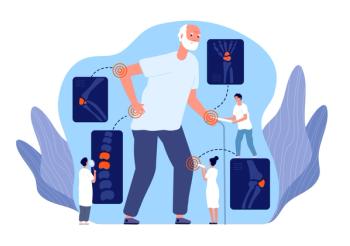
White, Brown Bagging of Therapies Creates Extra Steps for Oncology Practices
Pharmacists from the Cleveland Clinic discuss the impact of payer dispensing requirements, known as white bagging and brown bagging, on oncology practices and on patients.
Getting
Heather Jones, PharmD, MS, and Michael E. Seabright, PharmD, BCOP, outlined the challenges clinics are having as practices such as “white bagging” and “brown bagging” become more common. Jones and Seabright are affiliated with Case Comprehensive Cancer Center/ University Hospitals Seidman Cancer Center and Cleveland Clinic Taussig Cancer Institute.
Both white bagging and brown bagging offer insurers a way to cut costs by dispensing drugs directly from a specialty pharmacy. These days, the pharmacy may be one the payer owns, increasing the incentive to dispense drugs directly instead of allowing the clinic to do so, under the “buy and bill” method that dominated oncology for years.
White bagging, which involves dispensing drugs to the clinic, and brown bagging, in which drugs are sent to the patient, have increased during the COVID-19 pandemic, as patients and payers turned to home infusion to keep those with compromised immune systems away from hospitals. But these practices have downsides, both for practices and patients, Jones and Seabright said.
Brown bagging, Jones said, severs the “chain of integrity” of the drug, and if patients fail to store it properly the quality could be compromised. Many states have adopted regulations on brown bagging for this reason, she said.
When COVID-19 hit, Jones said, her institute saw a drop in clinic appointments. “That was, of course, expected because we were limiting the number of appointments,” she said. “We saw an increase in self-administered formulations, in addition to patients receiving care in the home. So that then resulted in an increase in white bagging practices and patients’ pharmacy benefit, and this shift was essentially accelerated when COVID hit.”
Jones pointed to a recent survey that found 40% of provider-infused therapies now have mandatory pharmacy requirements, and 37% have preferred specialty pharmacy over buy and bill.
Ending buy-and-bill cuts the practice out of a revenue but doesn’t eliminate the work of storing and administering the drug to the patient. There’s still liability involved, and the drugs shipped from specialty pharmacies through white bagging must be kept in a separate inventory. Seabright presented a chart showing the many extra steps involved when a drug is dispensed through white bagging.
This doesn’t just affect revenue for the practice, he said. Use of a specialty pharmacy means that reimbursement comes not from a patient’s medical benefit but from the pharmacy benefit, and that can mean higher out-of-pocket costs for patients. This can lead to delays if patients must qualify for payment assistance programs to help meet their cost-sharing obligations, he said.
“This can result in additional enrollment requirements for copay assistance,” Seabright said. “Formulary restrictions set by the insurer can also lead to delays if medications need a new prescription sent for the product that they will pay for.”
He walked the audience through a case study of a woman with metastatic HER2+ breast cancer who was prescribed intravenous trastuzumab every 21 days. She was first treated with trastuzumab for breast cancer in 2008 while living in another state; her clinic then dispensed her therapy through buy-and-bill. But when she moved to Ohio and experienced a recurrence in 2014, insurance regulations required that the patient take a different drug, and trastuzumab requires prior authorization through the pharmacy benefit. This has required many more steps, and at one point, therapy had to be rescheduled.
The risks of white bagging are not always clear to patients, Seabright said. Brown bagging can also cause treatment delays if the clinics cannot verify how the medication was stored between the time it was received to the patient and the time it is brought into the treatment facility.
“All of these factors are limitations to the patient's access to care,” Seabright said. Besides the financial and operational challenges, when patients experience delays, they may vent their frustration in lower patient satisfaction ratings for the clinic, even if the insurance dynamics are the source of the problem.
During the question and answer period, Jones acknowledged that some clinics turn away patients whose insurance demands use of a specialty pharmacy. The institute at Cleveland Clinic does not. However, she said, mandates that limit not only who dispenses therapies but where treatment can occur make things challenging and less convenient for patients.
“We holistically support the notion of ‘patients first’ and doing whatever we can to continue treating them in providing the continuity of care, so that they can receive their treatment in the same facility as the provider,” she said. “What makes it difficult is when you know a patient is not only mandated to receive white bagging, but then they're also mandated to have a site of care restriction and have the medication administered at a provider-based clinic.”
Newsletter
Stay ahead of policy, cost, and value—subscribe to AJMC for expert insights at the intersection of clinical care and health economics.














































